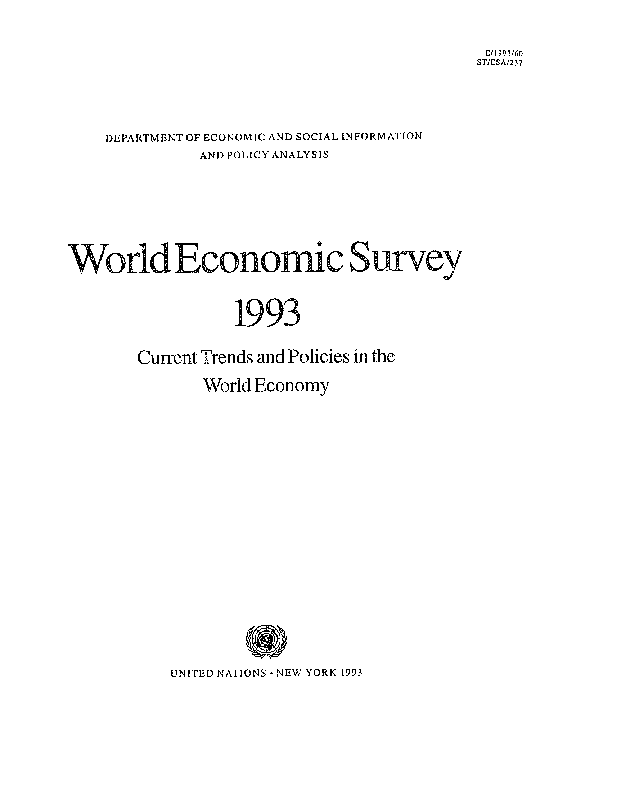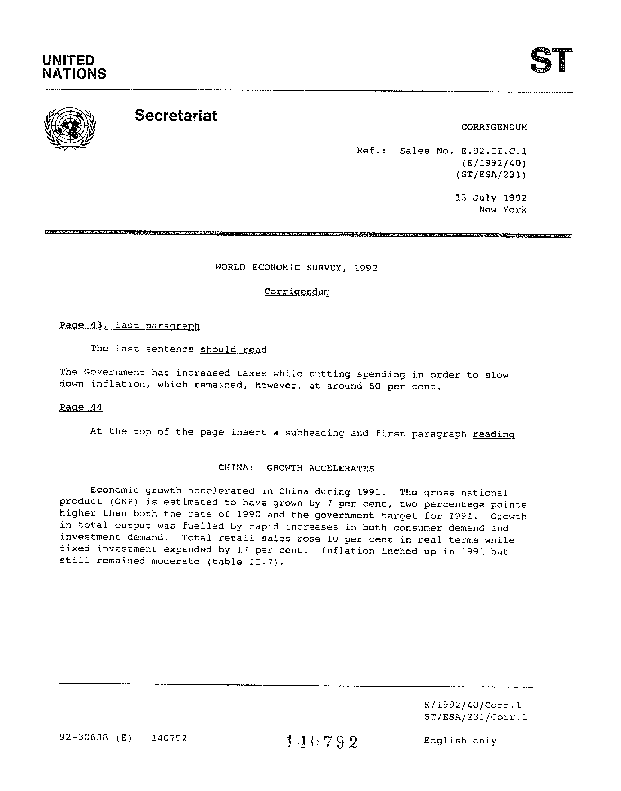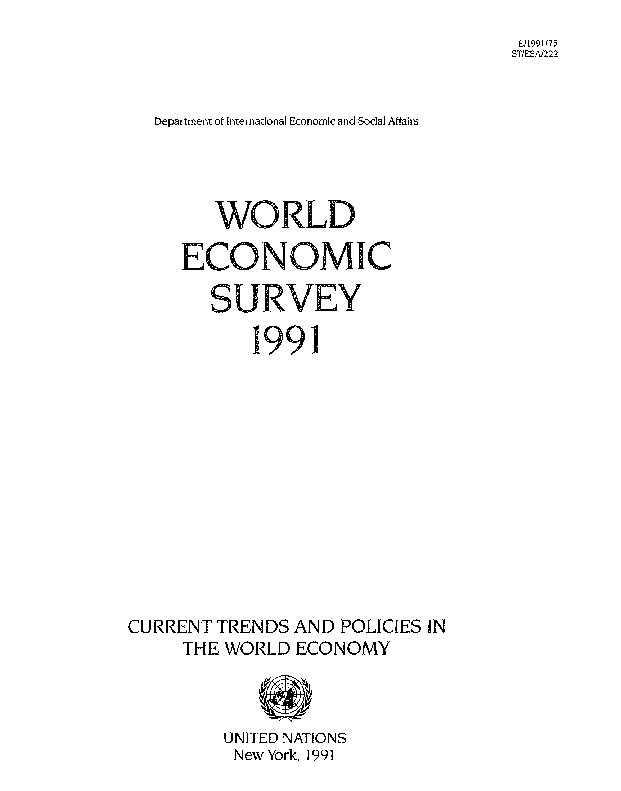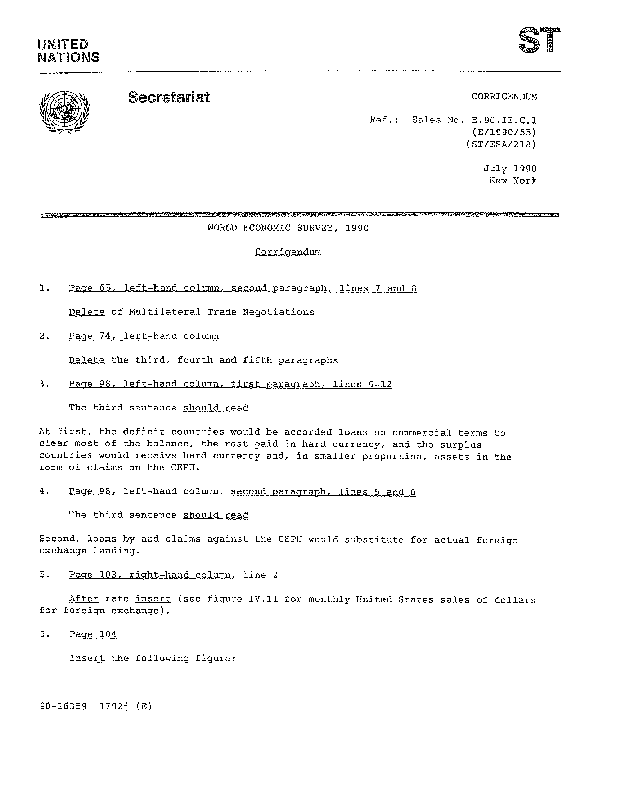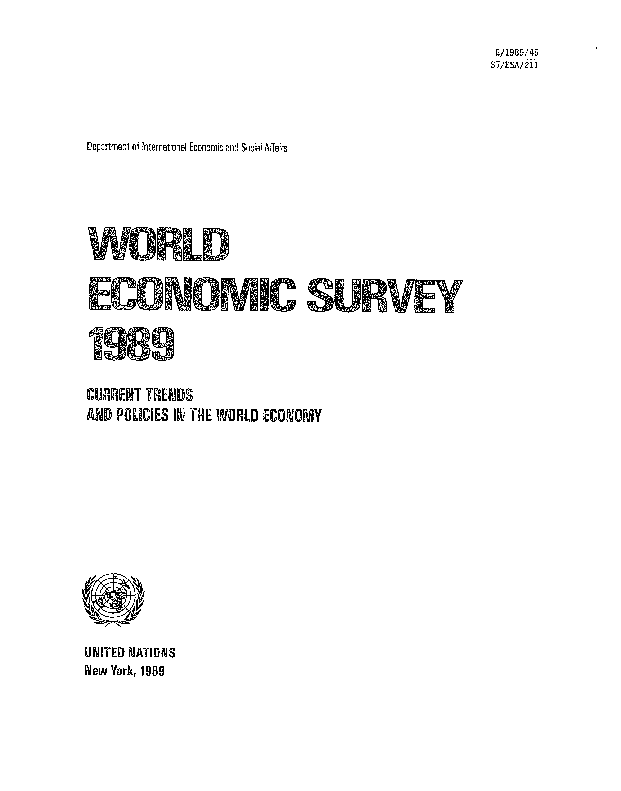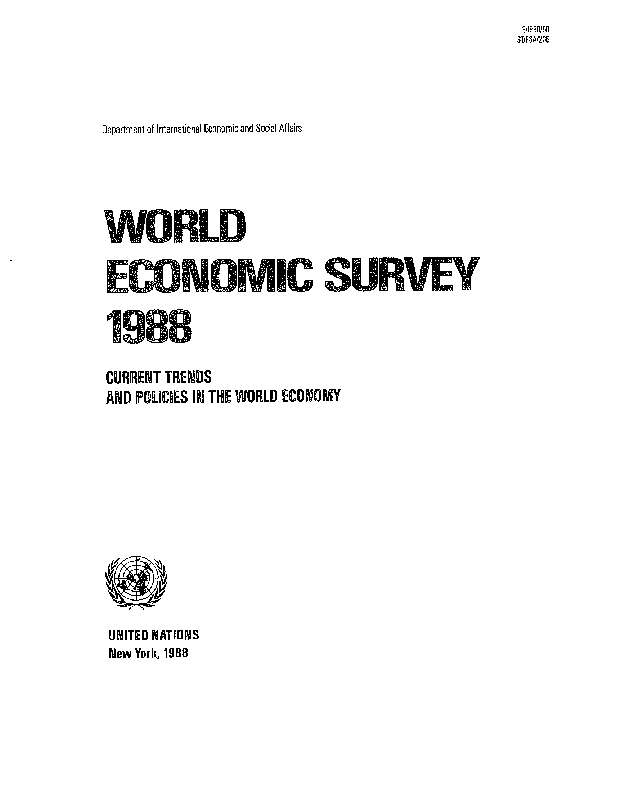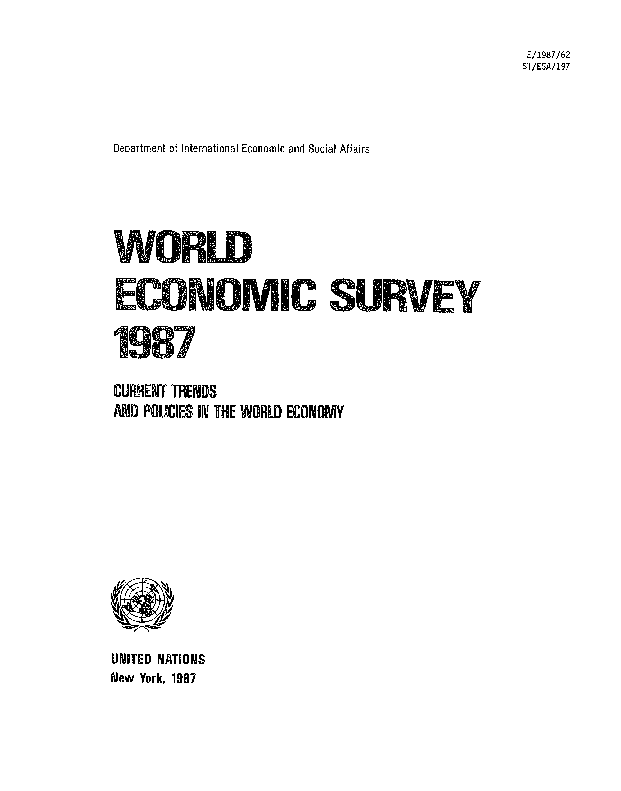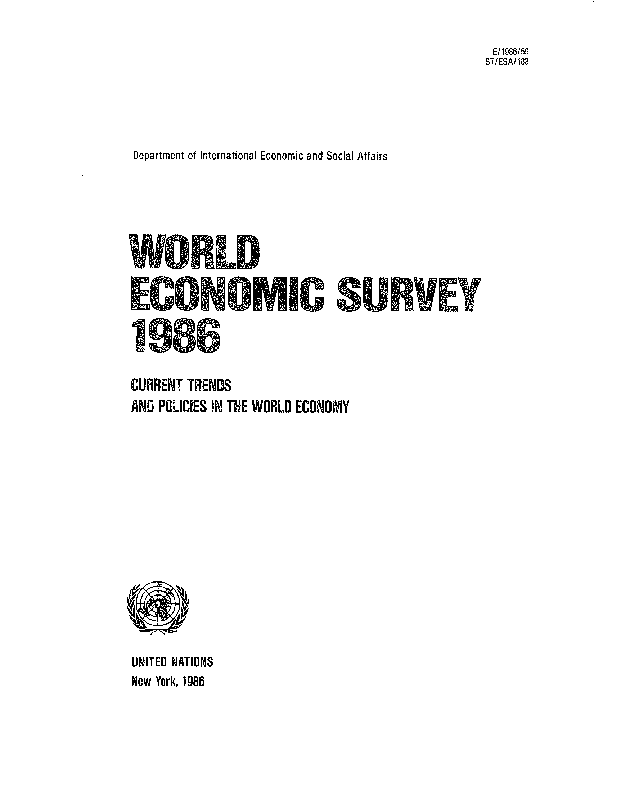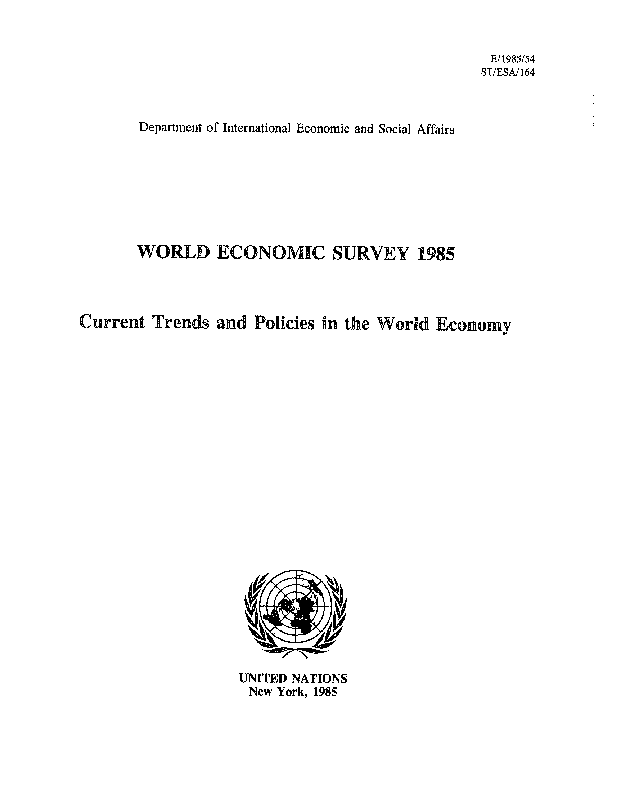Publications
Displaying 31 - 40 of 90
World Economic Survey 1993 highlights the persistent
World Economic Survey 1992 examines the effects of t
World Economic Survey 1991 examines the historical,
World Economic Survey 1990 analyses the effects of t
World Economic Survey 1988 highlights the dramatic f
 Welcome to the United Nations
Welcome to the United Nations
